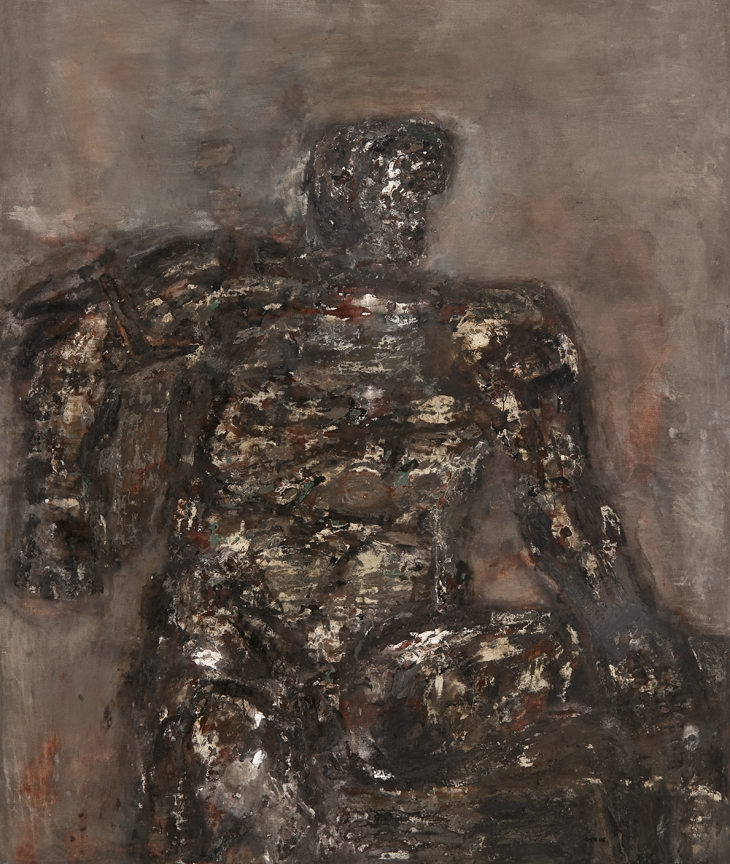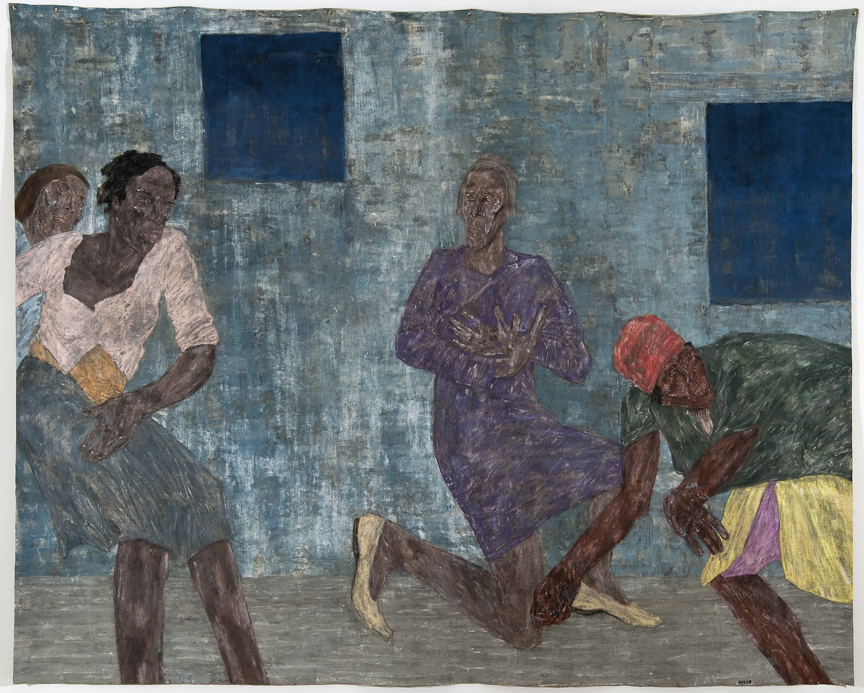
Seated Boxer II
Leon Golub
Golub came to national prominence toward's the late-1950s for a series of anguished and powerful paintings based on ancient myths. These works evolved in his search for a vital psychological subject and a physically-brutal method in which to make them resonate with the modern world. Chicago-trained curator Peter Selz included several works from this early period in a controversial but important 1959 exhibition at The Museum of Modern Art called "New Images of Man." Golub and other Chicago-based artists such as Cosmo Campoli and H.C. Westermann were included with Europeans such as Francis Bacon (1909-1992), Jean Dubuffet (1901-1985) and Alberto Giacometti (1901-1966) whose work used the figure in startlingly visceral and haunting ways. The diverse exhibition made a strong argument that artists in the postwar period had never abandoned the human condition as a critical subject in which to engage creativity and provoke political action. This seemed to threaten the New York art world's dominance as well as the myth that non-objective, gestural painting was the most progressive way in which to work after the war.
Golub and his contemporaries acknowledged new painterly techniques but used them to explore phenomenology, existentialism, and later, more overtly political content. In "Seated Boxer II," for instance, Golub designed a figure whose flesh is scraped, gouged, and lacerated but who has the strength to continue in the world. The artist achieved these effects by mixing two different kinds of paint, knowing they would dry together in conflict. He also worked with the canvas on the floor to confront his subject and physically torture the surface with numerous unconventional tools.
Artist
Date of Birth
(1922-2004)
Date
1960
Medium
Oil and lacquer on canvas
Dimensions
95 1/2 x 80 1/2 in. (242.57 x 204.47 cm.)
Accession #
2004.10.1
Credit Line
Alexander Harrison Fund
Copyright
© The Nancy Spero and Leon Golub Foundation for the Arts / Licensed by VAGA at Artists Rights Society (ARS), NY
Category
Subject
We're so excited you're planning to visit PAFA!
Make time for art — visit us Thursday to Sunday.
Before reserving your tickets, please review helpful information about museum hours, accessibility, building access, and special admission programs.
If you have any questions, feel free to reach out to us at visitorservices@pafa.org — we’d love to help!
